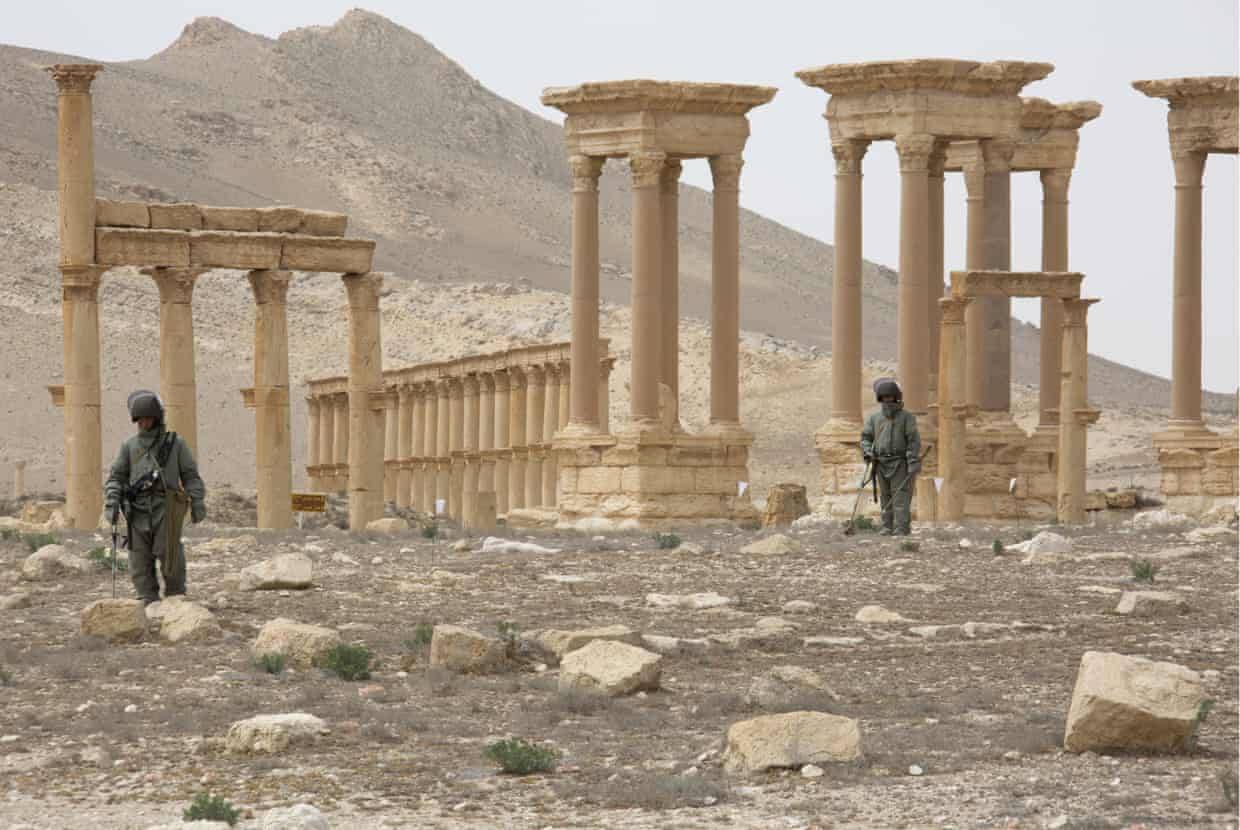Writing for The Guardian, Jonathan Jones argues that even if we have the technological means to do so, we should not attempt to “fix” Palmyra in the aftermath of destruction by ISIS. Doing so would falsify the history of the site, argues Jones—a history that, sadly, includes the havoc wrought by ISIS. Jones calls for a methodical and sensitive “preservation” rather than an overzealous “restoration.” An excerpt:
How can these terrible losses be put right? That seems to be the question archaeologists are asking. It seems to be what the world expects. Yet it may be the wrong approach. Restoration is a delicate art, and the responsible preservation of antiquities has to mean accepting the finality of loss where rebuilding might be deceitful.
The first job in Palmyra is to assess the damage very, very carefully. It will surely take many years to sift through the rubble of the demolished buildings with the appropriate caution and precision. If enough chunks of masonry and sculpture have survived in sufficiently recognisable shape, it may indeed be possible to re-erect parts of buildings or even entire structures. That would be wonderful. On the other hand, it may turn out to be more truthful to display the fragments in a specially constructed museum.
What is never legitimate is to rebuild ancient monuments using modern materials to replace lost parts – to essentially refabricate them – even though today’s technology makes that seem practical. I don’t see how anyone at this moment can vow to fully restore Palmyra unless they plan to ride roughshod over archaeological reality. The best anyone can say is that they will do the best that can be done.
In our age of digital scanning, satellite photography and 3D printing, it is tempting to succumb to the delusion that every ruin can be restored. Yet the hard lesson of three centuries of modern archaeology is that over-restoration damages the past. Pompeii was excavated by sensitive scholars who preserved its paintings without excessively touching them up, or “completing” the Roman houses. By contrast, the British archaeologist Arthur Evans created a strange mess in his arrogant over-restoration of Knossos in Crete.
Image: Russian combat engineers check for mines in retaken Palmyra. Via The Guardian.
